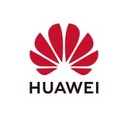Master thesis – Image Processing Techniques for Signals in Wireless Communication
Kista, Sweden
Huawei Consumer Business Group
HUAWEI ist weltweiter Marktführer für Telekommunikation mit einer großen Produktauswahl einschließlich Smarttphones, Tablets, Wearables, Breitbandgeräten und Smart-Home Geräten.Communication
Location: Kista, Stockholm
Preferred starting date: Jan. 2025
Extent: 1-2 student, 30hp.
About the company
Founded in 1988, Huawei Technologies is one of the fastest growing telecommunications and network solutions providers in the world. At Huawei Technologies, we look for people who share our vision: to enrich life with communication. We are a leading supplier of next generation telecom networks and currently serve 37 of the world’s top 50 operators. Our people are committed to providing innovative products, services and solutions and understand it as their mission to create long-term value and growth potential for our clients.
The Huawei office in Sweden is the leading overseas R&D office in Huawei, and the Wireless Algorithm group at Huawei Sweden drives innovation for the Huawei Wireless RAN product. We work on both advanced receivers and on Radio Resource Management algorithms, for both LTE and 5G.
Thesis description
5G is posing high requirements on data rate, and one alternative to achieve this is to increase the number of antennas on both transmitters and receivers, which is known as a MIMO system. However, a massive MIMO system comes along with challenges in interference suppression and limited memory for computation. Recent literature accumulatively suggests that neural network solutions in image processing could be useful as well for a MIMO system.
- Deep image prior (DIP): As the channels in wireless communication are changing volatilely with time and frequency, most of the proposed neural network solutions are not robust to generalization. DIP could be an efficient online solution that partially borrows concepts in machine learning but still achieves performance improvement [1].
- Implicit Neural Representation (INR): Compression of channel information is desirable, and this could be possible given the spatial and temporal consistencies of channels. A possible approach [2] using INR is to encode the information into the weight of a neural network.
The student is expected to work on either one of the above topics upon mutual interest. The goal is to verify the practicality of these techniques for a MIMO system.
- [1] H. Chang, B. Vucetic, W. Hardjawana, “Graph-based Untrained Neural Network Detector for OTFS Systems”, https://arxiv.org/abs/2404.05191, 2024
- [2] H. Wu, M. Zhang, Y. Shao, K. Mikolajczyk, D. Gündüz, “MIMO Channel as a Neural Function: Implicit Neural Representations for Extreme CSI Compression in Massive MIMO Systems”, https://arxiv.org/pdf/2403.13615, 2024
Qualifications
- Master student in Mathematics, Computer Science, Electrical Engineering or equivalent.
- Background in areas such as optimization, signal processing and machine learning
- Comfort in reading academic papers from interdisciplinary domains
- Hands-on experience in Python and ML libraries such as Tensorflow / PyTorch / JAX.
Contact person
Jinliang Huang
* Salary range is an estimate based on our AI, ML, Data Science Salary Index 💰
Tags: Computer Science Engineering JAX Machine Learning Mathematics Python PyTorch R R&D TensorFlow
Perks/benefits: Career development Startup environment
More jobs like this
Explore more career opportunities
Find even more open roles below ordered by popularity of job title or skills/products/technologies used.
